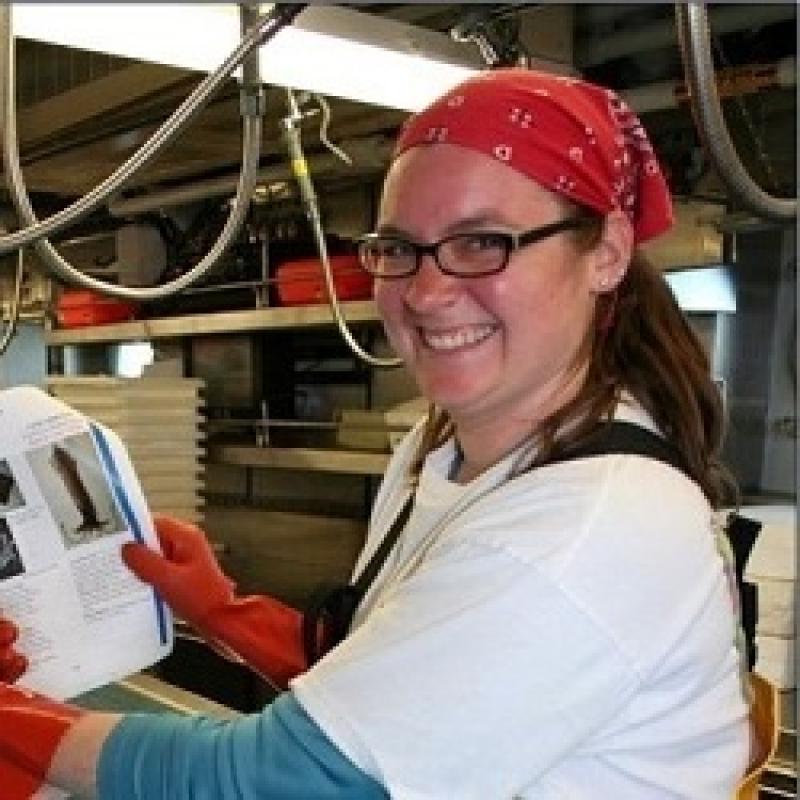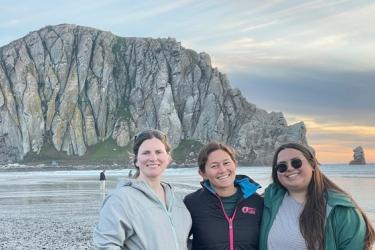The Bell M. Shimada sails with a wide range of sensors and equipment to evaluate ocean and environmental conditions. These data support our survey operations at sea, and our analyses back on land. Sensors record ship's location and heading (GPS), but also collect data on things like wind speed/direction, air temperature/humidity, and water temperature/salinity at the surface. By taking readings every few seconds, the result is a formidable set of data! Shimada also has a seawater flow-through system that brings water from 5 m below the surface right into the Chem Lab. The ship uses this water to measure temperature and salinity, but the novel part is that having it come straight into the Chem Lab allows HABs, eDNA, and CytoBot to take water samples right in the comfort of the lab.
In addition to environmental data, Shimada is also constantly recording mechanical and operational data. While fishing, the ship records how much trawl wire is out, what the tension is on the wires, the speed of the ship, etc. The ship provides a headrope sonar (a Simrad FS70) for the net that provides/records net depth and an acoustic view of what is going into the net. In an ongoing quest to understand the trawl net and the environment, the Science Party has the Deck and Survey Departments strap additional sensors onto the net to measure temperature and salinity, and to record video of the fish passing into the end of the net. The Science Party combines these various data streams from fishing operations to estimate where the net fished in the water, compare it with the acoustic echograms, and see if we caught what we expected!

The Deck Department. Photo: NOAA Fisheries

